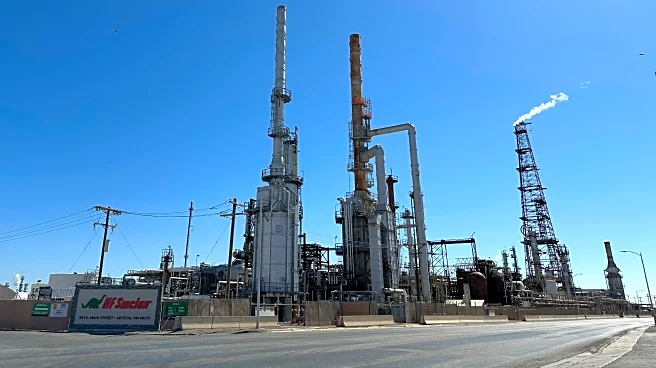What's Happening?
In October, Texas manufacturing activity continued to expand at the same pace as the previous month, with the production index remaining steady at 5.2. However, other indicators showed mixed results, with new
orders slightly increasing, while capacity utilization and shipments declined. The labor market saw an increase in headcounts but a reduction in the workweek. Price and wage pressures eased, with declines in the prices paid for raw materials and finished goods. Despite these developments, perceptions of business conditions and the outlook for future manufacturing activity weakened.
Why It's Important?
The mixed signals from Texas manufacturing highlight the challenges facing the sector, which is a significant component of the U.S. economy. While the continued expansion is positive, the weakened outlook and increased uncertainty could impact future investment and hiring decisions. The easing of price pressures may provide some relief to manufacturers, but the overall negative sentiment could hinder growth. These dynamics are crucial for policymakers and businesses as they navigate economic uncertainties and plan for the future.
What's Next?
Manufacturers in Texas and beyond will likely focus on strategies to manage uncertainty and adapt to changing market conditions. The future production and business activity indices suggest cautious optimism, but firms may need to adjust their operations to maintain competitiveness. Stakeholders will be watching for any policy changes or economic developments that could influence the manufacturing landscape, including potential shifts in trade policies or economic stimulus measures.














